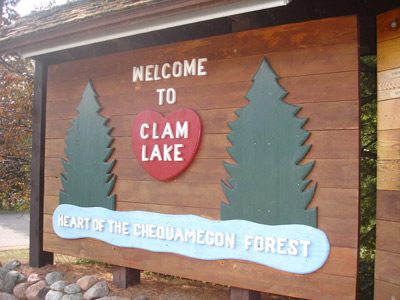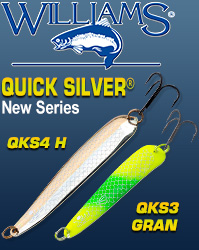FENCEROWS...A Wisconsin Elk Hunt
By John Luthens
For those of us perched up here in Wisconsin, hunting elk doesn’t come easily. The Western ranges are a half-country away. Mountain peaks and continental divides, valleys of aspen and bright glacier lakes; the wild haunts of a bugling bull elk are stuck in glossy sport-show brochures and remote hunting camps.
It takes some time to plan an elk foray from a base camp in our state. You need to do a little research: Places to hunt, where to stay, the terrain and the travel. Bagging an elk doesn’t just happen.
My brother lives in Colorado, in the foothills of the Rockies, so if I found myself in that corner of the world in search of wild elk, I would likely have a place to stay- contingent on my sister in law’s willingness to have a high-powered rifle stored in the house, along with mounds of dirty hunting clothes stuck in various corners.
Of course, I would still need to get to Colorado. Quick death by the price of a round-trip airline ticket, or slow strangulation by filling the truck’s gas tank until my credit card melted; it would amount to a horse-a- piece in the end.
I suppose I could hitchhike, but I doubt I’d get many rides wearing a beat-up pack sack and carrying a gun case. The State Police might be interested in my traveling welfare, but nobody else would. And if I did happen to shoot an elk out there, it would be a 1000 mile drag to get my trophy back to Wisconsin.
I’d need to buy one of those out of state license gizmos too. That would run upwards of eight-hundred bucks depending on the state. That is some serious planning, and it makes the price of elk steaks in Wisconsin seem pretty steep. If I wasn’t on such pleasant terms with my farming neighbor, I’d probably be better off harvesting one of his cattle and paying the consequences.
I was thinking all these thoughts and more as I poked my way up into the Lake Superior region of northern Wisconsin, and into the heart of the Chequamegon National Forest. The heart of the Chequamegon is Clam Lake, and while it’s not the mountain range vistas of Colorado, it’s as remote of a place as you’re likely to find in our state. And thanks to biological management, right in that Clam Lake heart, there’s an elk herd growing itself to respectable numbers.

Clam Lake-The elk heart of Wisconsin.
Ever since 1995, when 25 elk were trapped in Michigan and transported to a release site near Clam Lake, the herd has been monitored by a DNR elk management team. Today the elk herd stands at around 150. And while it is too early in the management game to say for sure, a Wisconsin elk hunt could loom in the future.
DNR managers point towards a target goal of 200 animals in order for a limited harvest hunt to be considered. Wolves and bears take their annual share, and vehicle collisions are still a problem. The state did try to reintroduce the elk back in the 1930’s, but poachers stopped that effort, with the last of the herd reportedly being killed in the late 1940’s. So while a lot could happen to derail a hunting season, hopefully today’s Wisconsin sportsmen are patient and conservation-minded enough to not make the list this time around.
I’ve roamed a good portion of the northern Chequamegon, fishing the rolling, rocky streams that flow out of the hills and bash a course for Lake Superior, but I’d never been to Clam Lake. The place had been gnawing at me, and I was curious about what the country offered up.
Even with no set elk hunting on the immediate horizon, it’s a cheaper foray than flying out West. Figuring that scouting an area is a prerequisite for a successful hunt, I decided to beat the crowds and start early. The fact that I might look like one of those people who camp out a week in advance to be first in line for concert tickets did cross my mind.
If you unfold a target map of the initial elk release range, it looks like a red bull’s eye in the center of the Chequamegon. A DNR pamphlet that I picked up in town says the release target is 288 square miles. Beyond the target, the range spreads out through the remote forestland, encompassing 824 square miles of buffer range. The total elk habitat encompasses parts of Ashland, Bayfield, and Sawyer counties.
That’s a daunting bit of area. I only had a portion of one day to spend on my initial scouting, so obviously I didn’t expect to find the herd grazing in plain view like it was a public zoo. But there were elk crossing signs dotting State Highway 77 as I drove into Clam Lake.
The signs are equipped with flashing lights like a school crossing. Through a grant from the Rocky Mountain Elk Foundation, the signs are receiving stations that trigger the lights to flash when they pick up a signal from collared elk that come within a mile radius of the signs. The signs are placed in zones with the highest risk of elk-vehicle collisions.
I’d found a marked trout stream called Dingdong creek that flowed through the elk range. There was a confusing network of logging roads leading to the stream, and I figured that fishing would be as good a bet as any to start to explore the area. I stopped into the local gas station/baits shop/gossip emporium for a little bit of everything it had to offer.
The proprietor wasn’t sure about Dingdong creek, and I think she thought I was a dingdong myself for talking trout fishing when everyone else in town was obviously there for bear hunting. I told her I was really there for elk, but I thought I might find them by fishing-and, well, anyway I guess I am a dingdong.
As I was leaving with my bait, a bear hunter came up to the counter and asked if there were any newspapers for sale. The counter lady politely told him that the mail hadn’t come, and if the mail doesn’t come to Clam Lake, then there aren’t any papers, because this is the furthest removed town in Wisconsin.
I wasn’t sure if she was kidding or not. But I passed the post office on logging route journey out of town. The only way to tell that the neatly trimmed house on the corner was the receiver of federal mail was a small sign out front.
It took some back-road driving to find the creek. A lot of the roads in the Chequamegon are nothing more than dirt and gravel trails. Some are marked on maps. Some are not. It’s a great area to lose yourself in, but it’s not especially conducive to actually finding something you are looking for.
The immediate area around Clam Lake looked to be a lot of low-lying tamarack and spruce bogs, with pine and hardwoods piled up on some of the higher ground. Trails ran off the logging roads into some of the hardwoods, but I ran right past the easy routes into the forest, opting instead for the boggy marsh fens, and it turned out that Dingdong Creek ran through some of the boggiest.
This particular region of the Chequamegon is known as the Great Divide District-fitting for an elk herd. The glacial uprising north of Clam Lake becomes a natural waterway siphon. Rivers on the north side of the divide flow into Lake Superior, while many of those on the south eventually find themselves emptying into the Mississippi River.
It seemed that Dingdong Creek couldn’t make up its mind which way to flow; there was virtually no current, and parts of the waterway were almost stagnant. The DNR map might list it as a trout stream, and maybe it is, but I only caught three chubs, and I still couldn’t tell you if I was fishing up or down stream.
There were high grass mounds with muskrat runways and pothole traps for the half-mile or so that I managed to negotiate. There was no end in sight to the bog grass hills when I erred on the side of caution and turned back.
Figuring that an accidental spill- maybe breaking an ankle in one of the grassy holes- might get me into one of those true survival tales was some motivation for me to push forward. Then again, nobody really knew where I was, and it was likely that an elk would wander by and find me by accident before another person would.
I knew then why this area was chosen as a release point for a Wisconsin elk introduction. There is so much wild country branching from around the heart of the Chequamegon, and it follows that a Clam Lake elk that doesn’t want to be seen stands a better than average chance of accomplishing it.
When I finally got back to the truck, I looked around once more. I knew there were hills and valleys here in this part of the world, and pine ridges and meadow stands of birch and aspen. There was no sound, but I could hear the bugling call of an elk clearly in my mind.
It wasn’t coming from out West either. It was coming from a nearer hunting ground. There’s a lot more area for me to scout, but I’d swear that the call of the Wisconsin elk was getting closer.









